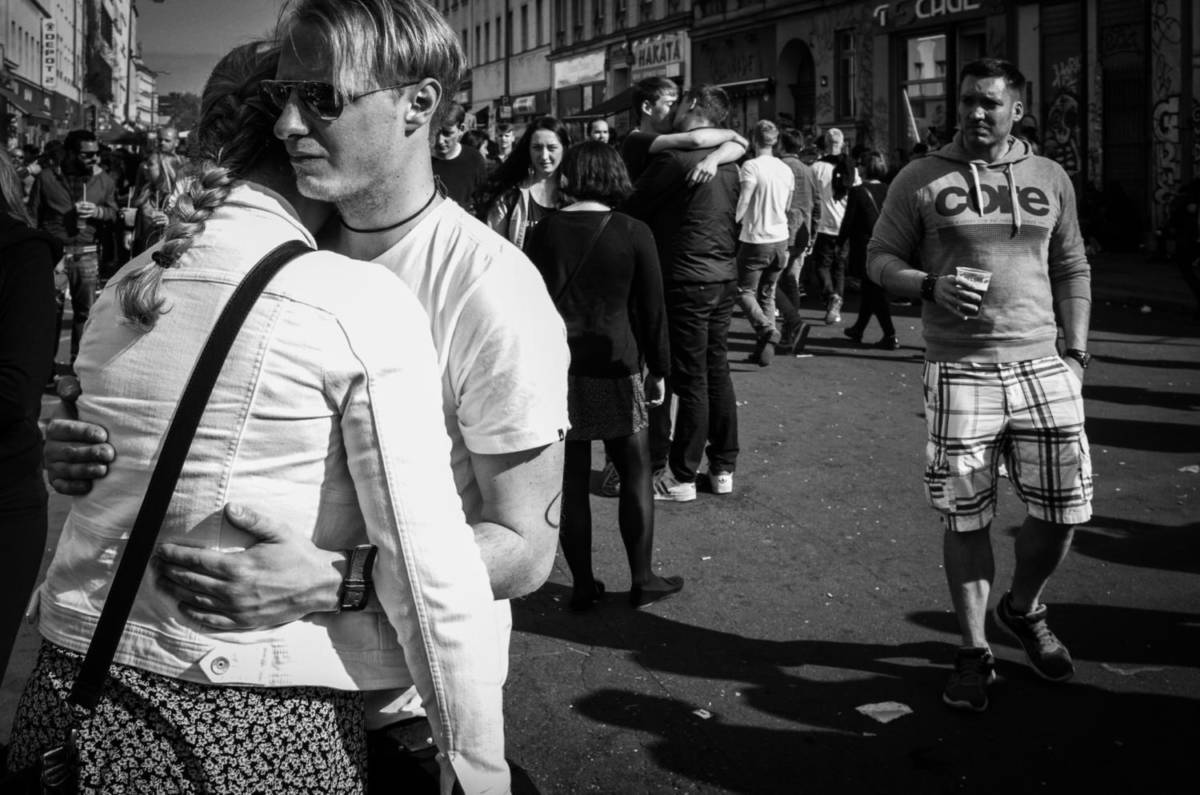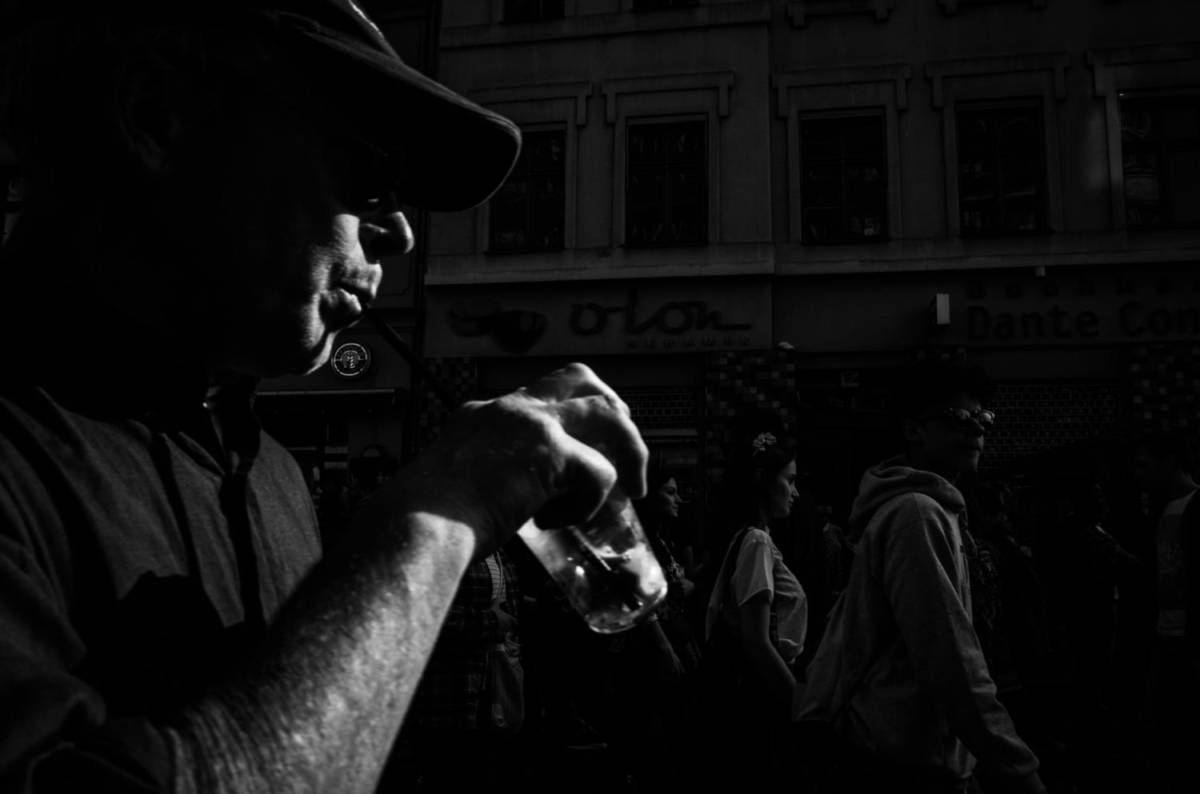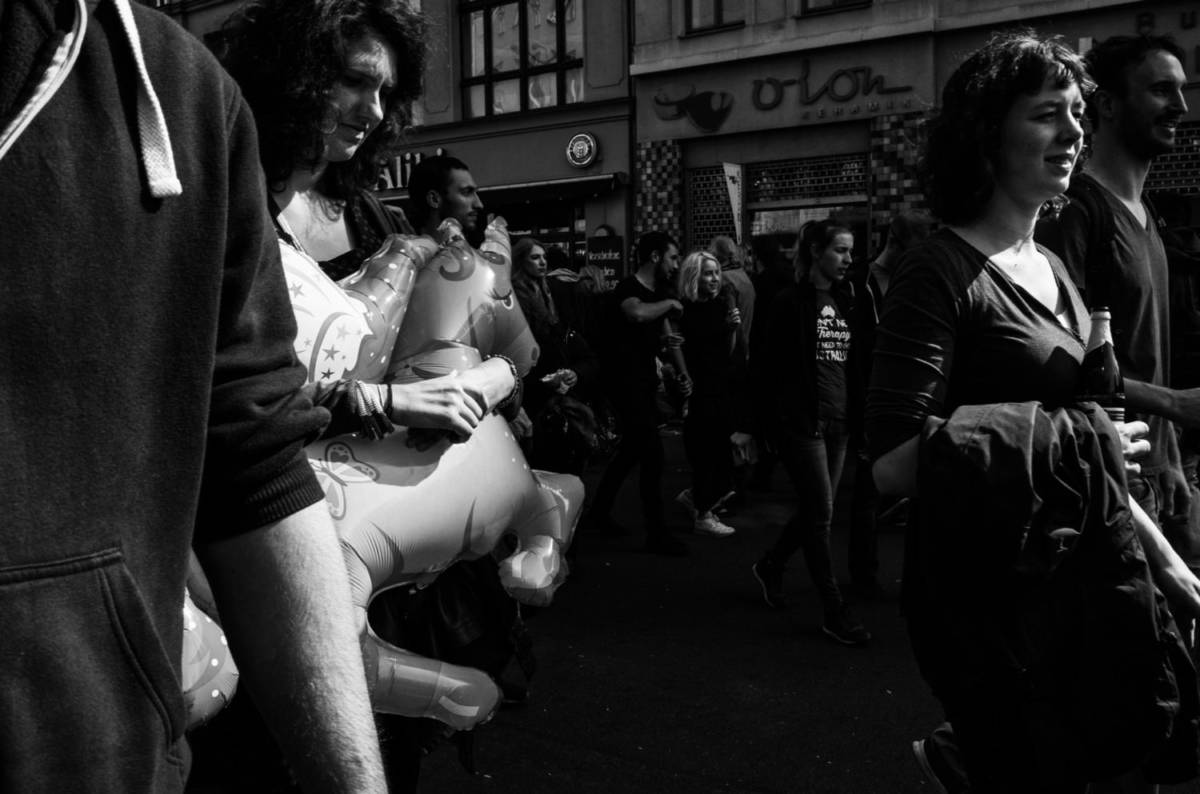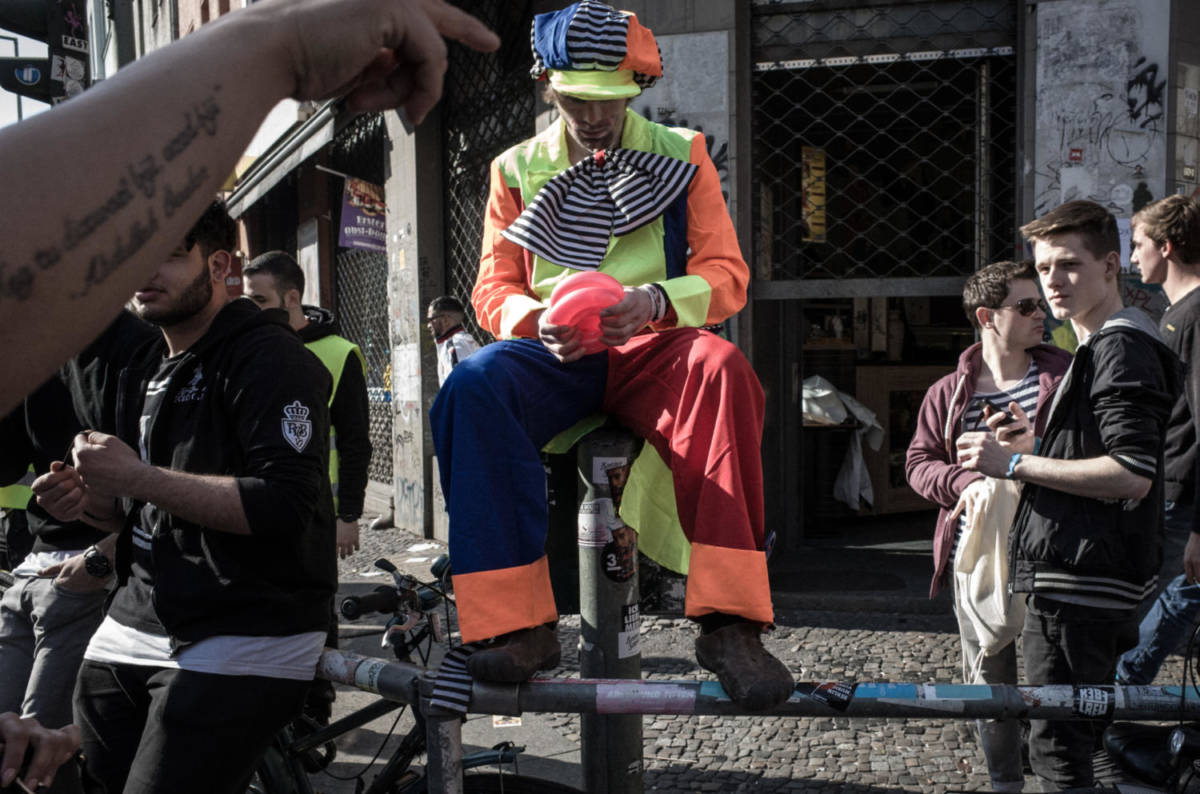The first lesson learned in Street Photography derives from Capa’s famous quote: “If your pictures aren’t good enough you are not close enough”. Now if you would take his words literally, it could mean that you can improve your pictures by taking a longer lens. Technically speaking your pictures are now closer to the subject, but this is not what Capa initially meant. Therefore I will interpret my understanding of “closeness” in Street Photography. Alongside the article will be pictures of the 1st of may festival in Berlin, called “Myfest”.
One part of the quote is easy to understand and a helpful lesson to learn in the beginning. When we start our journey in Street Photography, we often are too far away. Whether we are anxious about photographing in public or we have the urge to include as much in the frame as possible. We are too far away from our actual subject and the story we want to tell. It becomes increasingly difficult for the viewer to understand what the photographer wants to tell him when the main subject only takes up a tiny fraction of the picture. The picture hasn’t a clear focus no “storyline” that the viewer can follow and therefore will more often than not become uninterested in the picture.

So the first and obvious takeaway is true. If you move physically closer to the subject the photo will often be better compared to a more distanced one. You don’t have to take the Bruce Gilden approach and stick your camera in the face of a stranger. But if you have the feeling to be too far away from the street scenes, moving closer will help you to get into the scenes.
The way how I interpret closeness is, that not only the physical distance matters but that it is more important to be part of the scene that you want to photograph or in other words to be an “insider”. When I started in photography I worked on a documentary series about my local football team that I was a part of. Being a player myself helped me to gain insight into the team, the atmosphere and what were interesting scenes to photograph. This knowledge helped me to focus on photographing. If it would the first time for me in such an environment I would have missed a lot of opportunities.

Street Photography is usually not about such a continuous topic and it is hard to gain such a deep insight when you wander through the streets. There are a lot of unique events happening that you can’t be an “insider”. Along these singular events are also reoccurring topics that might catch your interest. There could be street musicians that catch your attention and you want to photograph.
Let’s imagine a scene where the musicians are playing in a crowded place and an audience has gathered in front of them.
If you approach the street musicians like most photographers would, you probably stand a few meters away, in line with the audience and get your picture from there. While this is a good start there are better opportunities to really break the “4th wall”. Try to stand out from the audience and work the scene by taking pictures from different angles and spots. Most musicians or artists don’t mind if you walk around them and look for a better picture, as long as you don’t disturb them.

From a viewer’s perspective, would you rather look at a picture from the audience far away that anyone could get, or at a picture from the stage that makes you feel like a rockstar yourself? This might be a bit exaggerated, but this is the bottom line of Rober Capa’s quote.
This is also the reason why I switched from my old Canon and a ~80mm lens to a RicohGR with a 28mm lens. Whenever I tried to take pictures of crowds on street festivals like the “Myfest” I had to distance myself from the crowd and take few steps back with the 80mm lens. In my opinion, I could feel this disconnectedness on my pictures and they wouldn’t really show what I truly felt during the festivals. Having the shorter lens really helps me shooting from inside the crowd. They might not be so well composed, but more importantly for me, the viewer can more easily reenact the atmosphere, the emotions and gets drawn right into the picture.

To conclude this article there are two topics I wanted to cover.
If you want to feel closer and create pictures that let the viewer emerge into the photo, try to work the scene by photographing from different angles, viewing points and simply doing it differently than the majority would do. Having a relatively short lens can help you work the scene in crowded and dense situations and helps you to photograph from the inside.
The other important aspect is to work on a project that only you are able to cover. If you are part of a club or group that follows an interest, you should try to tell the story from your perspective. No other person will have the insight that you have and even if you think that the activity or your job might be too mundane to be worth a photo series, you are wrong. You are one of the few that are able to share this unique perspective and there are more people out there than you think that would appreciate such a series because they would never be able to follow your adventure otherwise.
Stay Curious
Sebastian Jacobitz





















